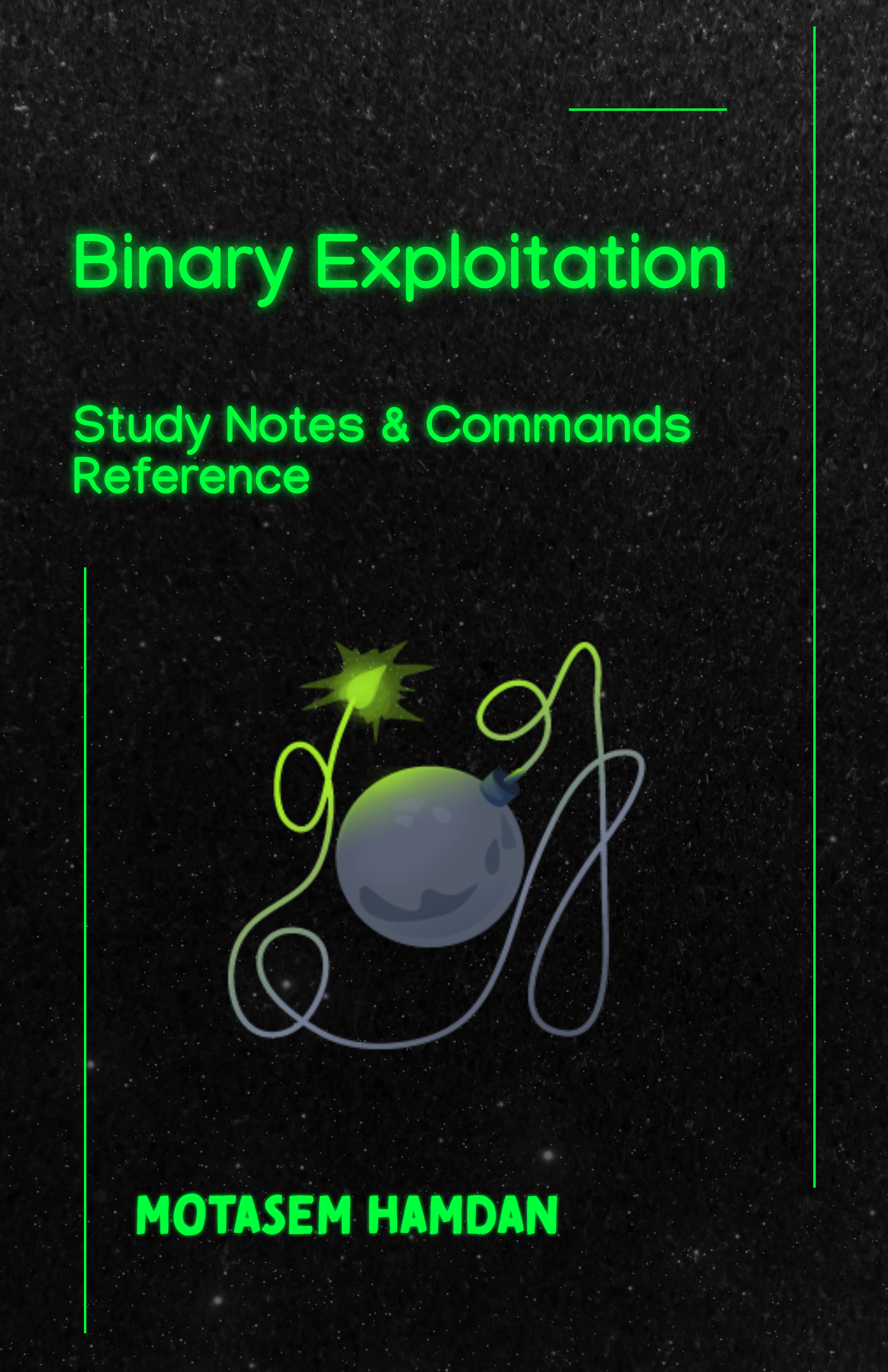This study guide comprehensively covers binary exploitation techniques, starting from assembly basics to advanced exploitation methods like Return-Oriented Programming (ROP) and ret2libc. It provides hands-on examples of exploiting stack and heap overflows, bypassing security protections (NX, ASLR, PIE), and using tools like GDB, pwndbg, and Ghidra.
Table of Contents
- Important Note
- Assembly Basics
- Registers
- The Stack in Computer Architecture
- Calling Conventions
- Global Offset Table (GOT)
- Return-Oriented Programming (ROP)
- C Programming
- Disassemblers
- Debugging
- Decompilers
- Buffer Overflow
- BOF Exploitation
- Common Binary Protections against BOF
- Common Definitions Before You GetStarted
- Common Tips For BOF Exploitation
- Tools and their installation
- Exploiting Buffer overflow when NX isenabled using Ret2libc
- Exploiting Buffer overflow when NX isenabled using ret2dlresolveWith gdb+peda
- Exploiting BOF | NX Enabled | UsingGadgets and ROP Chains
- Exploiting BOF with NX and PIE enabledusing ret2libc and stack pivoting.
- Exploiting BOF without ASLR and binaryprotections.
- RET2GOT: BOF when NX and ASLRprotections are enabled. [ldd]
- RET2GOT: BOF when NX and ASLRprotections are enabled. [Radare2]
- Exploiting BOF When PIE is enabled
- Exploiting SUID Bit Binaries[s]
- Buffer Overflow on Double FreeVulnerabilities
- TCACHE poisoning
- Unsorted Bin chunk
- Heap feng shui
- Using BOF to control global variables in aprogram
- Format String Vulnerability
- Resources
- Process Injection
- Process Hollowing
- DLL Injection
- Hacking Binaries with Frida
- Binary Security
Page Count: 150
Format: PDF
When you buy this book, you will be entitled to receive content updates for 3 months on it with the same original price that you paid for.
FAQ
What topics are covered in the guide?
The guide delves into various aspects of buffer overflow exploitation, including:
- Identifying and analyzing buffer overflow vulnerabilities.
- Crafting payloads to exploit these vulnerabilities.
- Bypassing common security mechanisms like NX (No eXecute) and ASLR (Address Space Layout Randomization).
- Utilizing tools such as GDB and Radare2 for debugging and analysis.
- Implementing Return-Oriented Programming (ROP) chains
- Additionally, the guide references practical exercises and challenges, such as those from HackTheBox, to reinforce the concepts discussed.
Does the guide include practical examples?
Absolutely. The guide incorporates real-world examples and walkthroughs, including exercises from platforms like HackTheBox. These practical scenarios help readers understand how to apply buffer overflow techniques in controlled environments, reinforcing the theoretical knowledge presented.
What prerequisites are recommended before using this guide?
To fully benefit from the guide, readers should have:
- A basic understanding of programming concepts, particularly in C or C++.
- Familiarity with Linux command-line operations.
- An introductory knowledge of assembly language and system architecture.
- Experience with debugging tools like GDB or Radare2 is advantageous but not mandatory.
Does the guide address modern security protections?
Yes, the guide discusses techniques to bypass or mitigate modern security mechanisms, including:
- NX (No eXecute) bit protections.
- ASLR (Address Space Layout Randomization).
- Stack canaries and other compiler-level protections.
It provides insights into how these protections work and strategies to circumvent them during exploitation.
What tools are recommended for following along with the guide?
The guide suggests using tools such as:
- GDB (GNU Debugger) for analyzing and debugging binaries.
- Radare2 for reverse engineering and binary analysis.
- Python for scripting and automating exploit development.
- Obsidian for organizing notes and markup files provided with the guide
These tools are integral to practicing the techniques discussed and are commonly used in the cybersecurity community.






